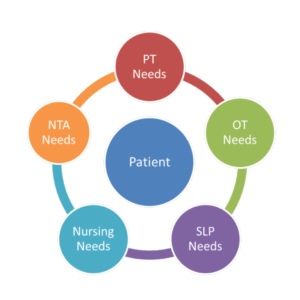Too little standardization in how states verify Medicaid applicants, GAO report says
In 2010, nearly $131 billion Medicaid dollars went to long-term care—almost half of the nation’s total Medicaid expenditure for that year. Long-term care applicants must show financial need of assistance in order to receive Medicaid, but the applicant verification process has suffered from wildly varied documentation practices among states, according to a Government Accountability Office (GAO) report released Monday.
The GAO surveyed all 50 states and the District of Columbia to determine what documentation each state required as verification of financial need. States conformed with basic requirements to document applicant assets, but the level of proof requested and the process used to verify applicant-submitted data varies greatly from state to state.
One of the biggest loopholes has been the transfer of assets. Since an applicant’s financial need is based on certain types of assets, the Deficit Reduction Act (DRA) established a “look-back” period to curtail those who might be tempted to artificially lower their financial status by transferring assets before applying for Medicaid. Not all states are using the same look-back timeframe, and states don’t always agree on the definition of an “asset,” the report found.
The GAO report identified many red flags among the application and verification procedures currently in use:
- Although all states checked Social Security Administration records, less than half of states contacted a financial institution to verify an applicant’s financial and investment data.
- The “look-back” timeframe is not standardized nationally, although many states use a 60-month timeframe.
- Georgia, Indiana and Ohio don’t require information on the transfer of assets.
- The widest range of variance in how an asset was documented among the states concerned the applicant’s primary residence.
- The District of Columbia and 11 states don’t consider a vehicle an asset.
- Thirty-five states do property searches within the applicant’s own county, but very few states conduct such searches routinely beyond the applicant’s home state.
- Electronic verification systems have been mandated for all states, but no state had completed the installation at the time of the survey.
As the aging population increases the demand for long-term care services, the lacunae in the verification processes will become more glaring, the GAO fears. “[S]ome of the variation we found may raise questions regarding how states determine Medicaid eligibility for long-term care and enforce certain provisions of the DRA,” the report concluded. But the Department of Health and Human Services commented that until all states have implemented electronic verification systems, each state may be limited to whatever third-party verification resources it can afford.
Read the GAO Medicaid Long-term Care report (PDF, 5MB)
I Advance Senior Care is the industry-leading source for practical, in-depth, business-building, and resident care information for owners, executives, administrators, and directors of nursing at assisted living communities, skilled nursing facilities, post-acute facilities, and continuing care retirement communities. The I Advance Senior Care editorial team and industry experts provide market analysis, strategic direction, policy commentary, clinical best-practices, business management, and technology breakthroughs.
I Advance Senior Care is part of the Institute for the Advancement of Senior Care and published by Plain-English Health Care.
Related Articles
Topics: Executive Leadership , Medicare/Medicaid , Regulatory Compliance










